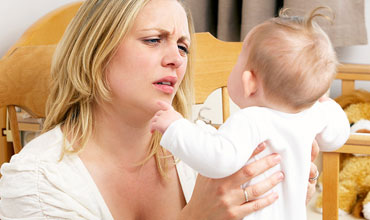Societal Contribution to Incidence of Puerperal Psychosis in Federal Psychiatric Hospital, Calabar, Cross River State, Nigeria

Abstract:
The purpose of this study was to examine societal
contribution in incidence of puerperal psychosis in Federal Psychiatric hospital,
Calabar. In order to achieve this purpose, three research questions and three hypotheses
were formulated to guide the study. The descriptive survey research design was used
for the study. The population of study comprised all female psychiatric patients
suffering from puerperal psychosis in Federal Psychiatric Hospital, Calabar. A convenience
method of non-probability sampling was used to select sample for the study. This
was made possible with in-patients’ record from female wards in the hospital revealing
a total of 50 patients. Instruments used for collection of data were questionnaires
and face to face interview. The reliability of the instrument was established through
internal consistency technique using Cronbach Alpha Analysis. A reliability estimate
of 0.867 was obtained for the instrument. Chi-square statistical analysis was used
for testing the hypotheses. All the hypotheses formulated were tested at. 05 level
of significance. The result of the analysis revealed that acceptability of married
women by family does significantly contribute to puerperal psychosis. Again, denial
of pregnancy does significantly contribute to puerperal psychosis. Finally, the
result revealed that continuous delivery of same sex children does significantly
contribute to puerperal psychosis. Based on this findings, it was concluded that
society do contribute to incidence of puerperal psychosis in Federal Psychiatric
Hospital Calabar, Nigeria. It was therefore recommended that the media, traditional
leader and religious organisations should educate the citizens on the importance
of family members allowing married couples to live their life without undue intervention.
Lastly, Government should enforce legislation to punish any man who for one reason
or the other maltreats his wife.
Keywords:
puerperium, psychosis, tranquilizer
References:
[1.]
Almeida, Ana; Merminod, Gaëlle; Schechter, Daniel
S. (2009). "Mothers with severe psychiatric illness and their newborns: a hospital-based
model of perinatal consultation". Zero to Three 29 (5): 40–6.
ISSN 0736-8038.
[2.] Doucet S, Jones I, Letourneau N et al. (2011).
Interventions for the prevention and treatment of postpartum psychosis: a systematic
review. Archives of Women's Mental Health. 14(2): 89-98.
[3.] Gelder, M., Gath, D., Mayon, R., and Cowen,
P. (1996) Oxford Textbook of Psychiatry, 3rd Edition
[4.] https://en.wikipedia.org/wiki/Postpartum_psychosis
[5.] Jones, I.; Craddock,
N (2001). "Familiality of the Puerperal Trigger in Bipolar Disorder: Results
of a Family Study". American Journal
of Psychiatry 158 (6): 913–7. doi:10.1176/appi.ajp.158.6.913. PMID 11384899.
[6.]
Jones, Ian; Hamshere, M; Nangle, JM; Bennett,
P; Green, E; Heron, J; Segurado, R; Lambert, D; Holmans, P; Corvin, A; Owen, M;
Jones, L; Gill, M; Craddock, N (2007). "Bipolar Affective Puerperal Psychosis:
Genome-Wide Significant Evidence for Linkage to Chromosome 16". American
Journal of Psychiatry 164 (7): 1099–104. doi:10.1176/appi.ajp.164.7.1099. PMID 17606662.
[7.] Jones I and Smith S (2009) Puerperal Psychosis:
Identifying and caring for women at risk. Advances in Psychiatric Treatment. 15:
411-418.
[8.] Kaplan & Sadock’s (1994), Synopsis of Psychiatry:
Behavioural Sciences/Psychiatry 10th Edition
[9.]
Marcé, L V (1862). Traité Pratique des Maladies Mentales [Practical Treatise on Mental Illness] (in French). Paris: Martinet.
p. 146.
[10.]
Oates, M (1988). "The development of an
integrated community-orientated service for severe postnatal mental illness".
In Kumar, R; Brockington, I F. Motherhood
and Mental Illness: Causes and Consequences. London: Wright. pp. 133–58.
[11.]
Osiander, Friedrich Benjamin (1797). "Glücklich gehobenes hitziges Fieber einer Wöchnerin mit Wahnsinn"
[Happy young mother with a violent fever upscale madness]. Neue Denkwuerdigkeiten fuer Aerzte und Geburtshelfer
[New memoirs for physicians and obstetricians]
(in German) 1. Goettingen: Rosenbusch. pp. 52–128
[12.]
Peplau, Hildegard E. (1998), Psychodynamic Nursing.
In A. Tomey & M. Alligood. Nursing Theorists and their Work (4th ed., pp. 337).
St. Louis, Mosby.
[13.] Reed, P; Sermin,
N; Appleby, L; Faragher, B (1999). "A comparison of clinical response to electroconvulsive
therapy in puerperal and non-puerperal psychoses". Journal of Affective Disorders 54
(3): 255–60. doi:10.1016/s0165-0327(99)00012-9. PMID 10467968.
[14.]
Robertson, E. (2005). "Risk of puerperal
and non-puerperal recurrence of illness following bipolar affective puerperal (post-partum)
psychosis". The British Journal of
Psychiatry 186 (3): 258–9. doi:10.1192/bjp.186.3.258. PMID 15738508.
[15.] Stafford-Clark & Smith, Andrew C. (1978),
Psychiatry for Students 5th Edition George Allen & Unwin (Oublishers)
Limited, Great Britain
[16.]
Twomey, Teresa (2009). Understanding Postpartum Psychosis: A Temporary Madness.
Westport, CT: Praeger. p. 12. ISBN 978-0-313-35346-8.

